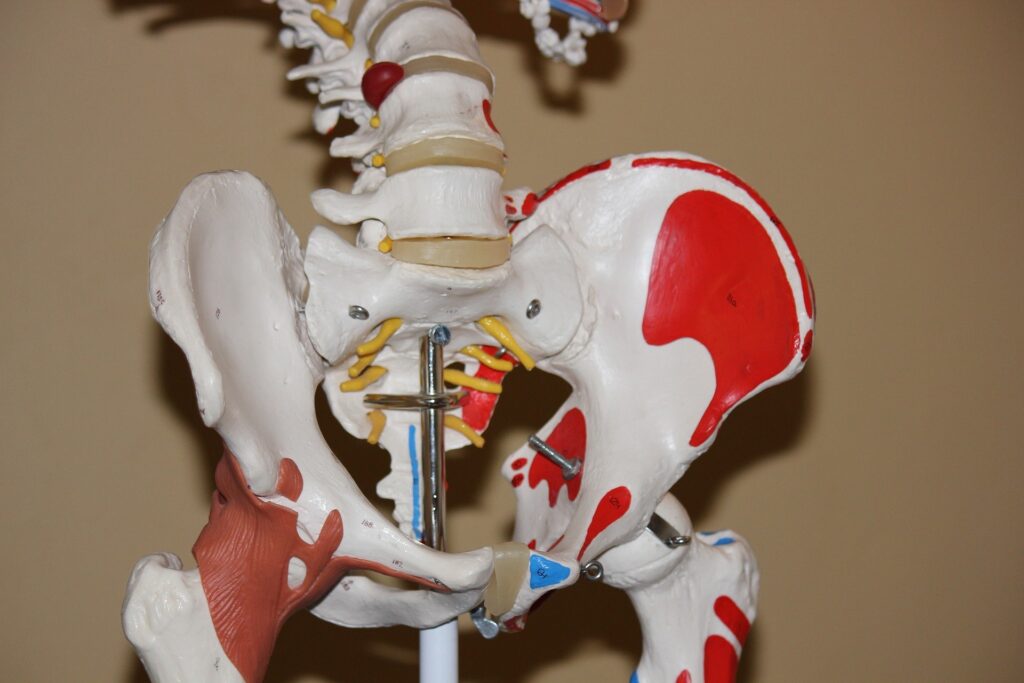What is a hip pointer injury? Hip Pointer Causes, Symptoms, Diagnosis & Treatments
Most often seen in contact sport athletes, such as football, lacrosse and hockey players, hip pointer injuries can occur in mountain athletes, too.
What is a hip pointer injury?
A hip pointer is a contusion of the iliac crest and/or the greater trochanteric region of the femur following a traumatic impact.
Translation: A hip pointer injury is a bruise on the top or front of the hip bone that is usually caused by a collision.

The ilium is the largest of three bones that come together to form the hip joint, and the iliac crest is the curved superior border of the ilium. If you were to place your hands on your hips, your hands would be resting on the skin above the iliac crest. As such, a hip pointer injury in the iliac crest can be most easily described as a painful bruise on the top edge of your hip bone.
A hip pointer injury in the greater trochanteric region, however, results in hip pointer pain on the lateral (outside) of the hip just below the head of the femur. While trochanteric bursitis can develop from a hip pointer injury, it’s important to note that trochanteric hip pointer pain results from a traumatic impact and trochanteric bursitis pain can have a number of different causes.
Common Causes
Hip and pelvis injuries in all sports are much less common than knee and ankle injuries – comprising of 5% to 10% of athletic injuries. While hip pointer injuries only make up a fraction of all hip injuries, the lack of overlying fatty tissue in the iliac crest and greater trochanteric region in athletes leaves these sections of the hip more susceptible to direct impact and resulting trauma.
Hip pointer injuries can be caused by:
- Football and rugby tackles
- Checks in hockey
- Dives in volleyball
- Falls in skiing and snowboarding and impacts with trees
- Cycling crashes
- Mountain biking crashes and impacts with trees
- Lead, top-rope and bouldering falls in climbing
- Any direct impact that crushes the soft tissues around the iliac crest or the greater trochanteric region (including car crashes, slip-and-falls, etc.)
Hip Pointer Symptoms
The first and most apparent symptom of a hip pointer injury is immediate and often excruciating pain after a direct impact.
Other hip pointer symptoms include:
- Bruising
- Swelling
- Decline in strength
- Limited range of motion in the hip and leg
- Muscle spasms
- Worsening pain with movement
Diagnosis
Hip pointer injuries are usually diagnosed with a physical exam from an athletic trainer or orthopedic specialist, as they are typically self-apparent. If your hip specialist is concerned about the severity of your injury, they may order X-rays or a CT scan to determine if there are any bone fractures, myositis ossificans, severe pain or persistent pain after treatment.

Hip Pointer Treatment & Recovery Time
While many athletes are familiar with the old acronym RICE (rest, ice, compression, elevation) for treating non-surgical injuries, many orthopedic surgeons and physical therapists now rely on POLICE for conservative yet comprehensive treatment of many orthopaedic injuries.
Protect
First and foremost, protect your injured hip immediately after injury by stopping what you’re doing and resting as needed. If needed, rely on crutches, scooters or other assistive devices to relieve load and reduce pain and discomfort.
Optimum Loading
To promote healing, maintain muscle and reduce stiffness, engage in gentle movement and increase loads at a reasonable pace. Hip pointer exercises, stretches and short walks can all help the healing process.
Ice
Apply ice in 10-minute cycles as often as possible for 24 to 48 hours after injury.
Compression
Unfortunately, compression is nearly impossible for hip pointer injuries, as the area is too large to apply appropriate compression.
Elevation
Though it may feel awkward, elevating your injured hip and leg above your heart will help reduce swelling, pain and discomfort. Use pillows, cushions or other supports to elevate your injured hip and leg.
Hip Pointer Injury Recovery Time
It’s important to give your hip enough time to heal properly before returning to sports and other activities, as you can easily reaggravate the injury. Hip pointer injuries usually take anywhere between one and four weeks to heal, though more severe injuries may take longer. And while hip pointer surgery is extremely rare, severe hip pointers can result in a hematoma or a fracture, in which surgery may be required to remove fluid buildup or perform a repair.
If you’ve experienced a hip pointer injury and think you may need to see a hip doctor, please contact us today. One of our orthopedic hip specialists will be more than happy to answer any questions you have about your injury.
Leave a Reply